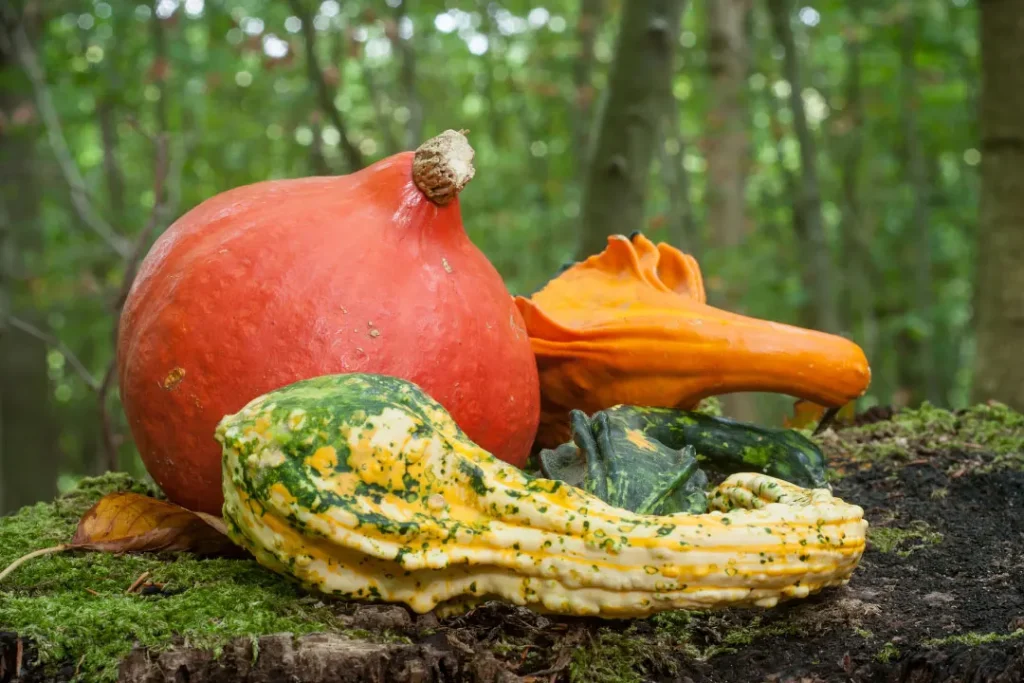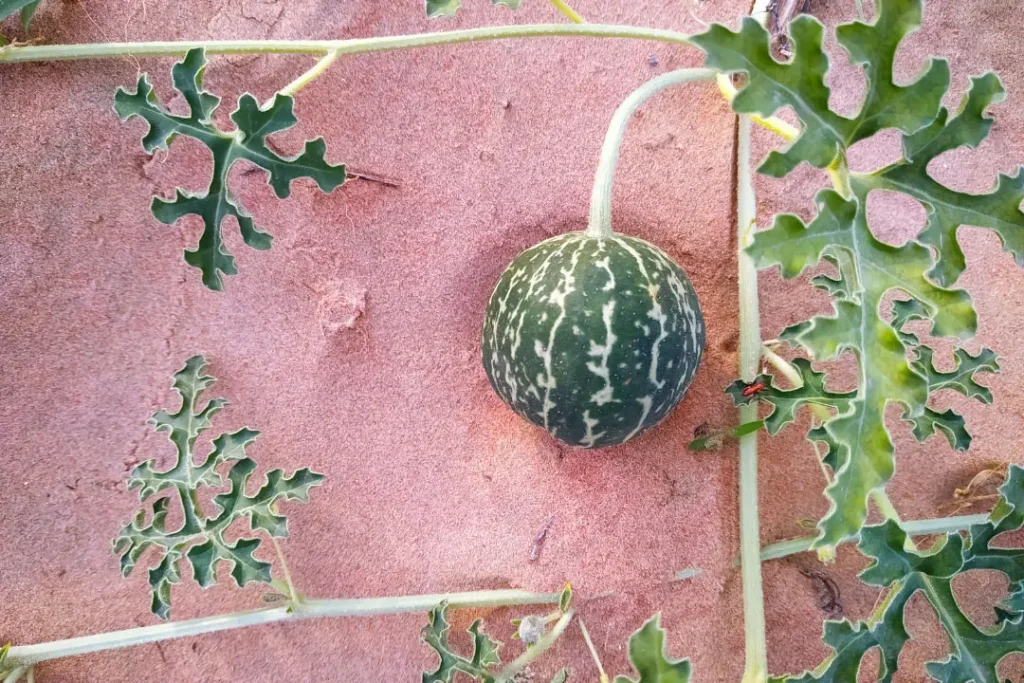The botanical world is rich in medicinal plants, each of which contain bioactive chemicals with potential health advantages. Colocynth (citrullus colocynthis), a plant often found in the Mediterranean region as well as regions of Africa and Asia, is one such botanical oddity. This study will look into colocynth’s chemical constituents, health benefits, ideal dosage, potential side effects, and possible substance interactions, while providing a comprehensive overview of this nutritional supplement.
You May Also Like:
Colloidal Silver: Benefits, Dosage, Side Effects, Drug Interactions, and Other Important Information
Nature of Colocynth
Colocynth, also known as citrullus colocynthis, is a cucurbitaceae plant. It is a perennial vine that produces yellow fruits that resemble miniature watermelons. However, they have a bitter taste due to high levels of cucurbitacin glycosides. Colocynth is a hardy plant native to the Mediterranean and desert regions of Africa and Asia. It is resistant to harsh heat and drought.
The dried pulp of colocynth fruits has traditionally been used for its powerful purgative properties, whilst the seeds, which are less toxic, have been utilized in numerous treatments. Diabetes, rheumatism, gastrointestinal ailments, and skin diseases are all treated with the herb in several traditional medical systems, including Ayurveda, Unani, and folk medicine.

Health Benefits of Colocynth
Colocynth has traditionally been used to treat a variety of medical ailments. Some of these historic uses are supported by current scientific research . For example, one of colocynth’s most well-known qualities is its ability to control glucose metabolism, making it an excellent diabetic treatment[3]. Cucurbitacins have been shown to inhibit glucose-6-phosphatase, an enzyme involved in the final step of gluconeogenesis, resulting in lower blood sugar levels[3].
Furthermore, Colocynth has anti-inflammatory activities, which are attributed to cucurbitacins’ ability to inhibit the cyclooxygenase (COX) and lipoxygenase (LOX) pathways. This reduces the generation of inflammatory mediators such as prostaglandins and leukotrienes[4]. The potential use of colocynth in cancer treatment has also been researched , with preliminary data indicating that it can trigger cell cycle arrest and apoptosis in cancer cells.
Chemistry of Colocynth
Due to its high concentration of bioactive substances, the colocynth plant, known for its yellow fruits and vine-like structure, has been used in traditional medical systems. Cucurbitacin glycosides, alkaloids, flavonoids, saponins, and sterols are among its primary constituents[1]. Cucurbitacins, in particular, are of great interest due to their high biological properties. Cucurbitacins are tetracyclic triterpenoids discovered in colocynth in both free and glycosidic forms[2]. According to research, the pharmacological properties of colocynth are mostly related to these cucurbitacins[2].


Physiological Properties of Colocynth
Colocynth’s health benefits are linked to its unique array of bioactive chemicals, with cucurbitacins being the key contributors to its pharmacological qualities.
In the context of diabetes treatment, cucurbitacins block glucose-6-phosphatase, an enzyme involved in the final step of glucose synthesis by the liver. These chemicals lower blood glucose levels, promoting glycemic management.
Optimal Dosage of Colocynth
Due to the variety in its bioactive chemical concentration, identifying the correct dosage of colocynth can be difficult, as it is with any plant-derived product. Traditional medical systems, on the other hand, offer some assistance. Colocynth, for example, is typically taken in dosages ranging from 125-500 mg daily for adults in Ayurvedic medicine[6]. However, before beginning any supplement program, it is always best to consult with your healthcare expert.
Side Effects of Colocynth
Despite its health benefits, excessive colocynth use can cause negative side effects, particularly due to its strong purgative qualities. Severe abdominal pain, diarrhea, and vomiting are possible symptoms[7]. Furthermore, excessive colocynth use has been connected to hepatotoxicity and nephrotoxicity[7]. The plant’s high cucurbitacin content is to blame for these negative consequences, as these substances are known to be poisonous to our liver and kidney.


Potential Substance Interactions with Colocynth
Caution needs to be taken when using colocynth because of the potential impact on blood glucose levels. Mixing it with diabetes drugs leads to the risk of hypoglycemia[8]. Concurrent usage with non-steroidal anti-inflammatory medicines (NSAIDs) can also increase the risk of gastrointestinal side effects due to its anti-inflammatoryproperties[9].
Furthermore, because of its potential hepatotoxic and nephrotoxic effects, colocynth should be used with caution in conjunction with other substances that can cause liver or kidney damage, such as certain over-the-counter medications, prescription drugs, and alcohol[10].
Best Responsible Use
Colocynth is a botanical entity of therapeutic relevance due to its diverse array of bioactive chemicals. It is a good candidate for further research due to its potential benefits in controlling glucose metabolism, modifying inflammatory responses, and demonstrating anti-cancer action. However, because of the related side effects and probable substance interactions, its usage should be approached with caution.
Colocynth: Conclusion
Colocynth can become a cornerstone for the future as therapeutic interventions evolve, and as our understanding of it grows. This greatly bridges the gap between traditional botanical wisdom and current scientific discovery. If you are interested in taking a natural supplement that can improve your health and well being, especially if you need aid in managing your glucose metabolism, inflamation, or preventing cancer, ask your doctor if colocynth is right for you!
References:
- Citrullus colocynthis (L.) Schrad (Bitter Apple Fruit): Promising Traditional Uses, Pharmacological Effects, Aspects, and Potential Applications.link:https://www.ncbi.nlm.nih.gov/pmc/articles/PMC8821906/
- The fruit of C. colocynthis is commonly called Colocynth/Bitter Apple (English), Hanjal (Urdu), Indrayan (Hindi), Kattu Kattuvellari (Malayalam), Anedri (Sanskrit), Rakhal (Bengali), and Pcitummatti (Tamil) [95,96].link:https://www.sciencedirect.com/topics/pharmacology-toxicology-and-pharmaceutical-science/colocynth
- Colocynth (Citrullus colocynthis) is a plant that grows in East Asia. Its fruit looks like a small watermelon and contains chemicals that are unsafe.link:https://www.webmd.com/vitamins/ai/ingredientmono-798/colocynth
Important Note: The information contained in this article is for general informational purposes only, and should not be construed as health or medical advice, nor is it intended to diagnose, prevent, treat, or cure any disease or health condition. Before embarking on any diet, fitness regimen, or program of nutritional supplementation, it is advisable to consult your healthcare professional in order to determine its safety and probable efficacy in terms of your individual state of health.
Regarding Nutritional Supplements Or Other Non-Prescription Health Products: If any nutritional supplements or other non-prescription health products are mentioned in the foregoing article, any claims or statements made about them have not been evaluated by the U.S. Food and Drug Administration, and such nutritional supplements or other health products are not intended to diagnose, treat, cure, or prevent any disease.
